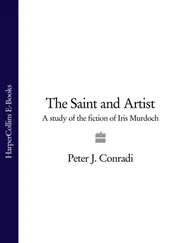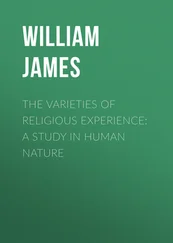The Disease of Chopin
A comprehensive study of a lifelong suffering
Victoria Wapf
Cover designer Julia Kravchenko
© Victoria Wapf, 2017
© Julia Kravchenko, cover design, 2017
ISBN 978-5-4483-1531-2
Created with Ridero smart publishing system
This book wouldhave been impossible to complete without a great deal of help and support ofmany people from around the world. That is why I am glad to seize thisopportunity and express my gratitude to those who, in one way or another, helped me to reach the goal.
First of all I want to thank my family. They have not only granted me spare time to work on the manuscript, but also kept encouraging me along the way, nurturing my confidence and scientific curiosity.
Many thanks to Professor Tadeusz Dobosz, Head of the Molecular Techniques Unit of the Forensic Medicine Department at the Medical University of Wroclaw (Poland) – for his precious comments and deep appreciation of my work.
Sincere gratitude to Mr. Piotr Mysłakowski, publisher and researcher in the field of genealogy and biographical sciences, a renowned architect and designer – for his valuable notes and corrections in regard of Chopin’s genealogy.
I am thankful to Dr. Lorenzo Käser from the Department of Graduate Education in Human Medicine, Zurich University – for providing an excellent learning and teaching environment and serving as a brilliant example of a physician, mentor and educator I always wanted to be.
A special thanks go to Prof. Wolfgang Jungraithmayr of the University Clinic of Thoracic Surgery in Zurich. A talented pianist and violinist, he infected mewith the idea to research the medical history of Frederic Chopin.
And, of course, I can not thank enough Julia and Maria, who assisted me with proofreading and graphicdesign, because without them all my efforts would be worthless. Both of themput every effort to create a book of a truly good quality.
I also thank my dear friends and colleagues Dr. Maria Bär, Dr. Iryna Cranny, Dr. Alexander Garmaev, Dr. Heiko Frühauf, Dr. Ursina Jansen, Dr. Yves Jaccard, Prof. Dmitry Kazakov, Ina Ladnar, Dr. Barbara Lütolf, Fahim Mozaffari, Nora H. Gräni, Dr. Elisabeth Hohenstein, Prof. S. Vavricka, Dr. Elisabeth Rushing, Bota Tynybekova, Philip Twaites, Dr. Matthias C. Walter, Cyril Wechsler, Pamela Wible, Priyatharsan Yoganathan und Nishanththan Yogarajan – who appreciate and support my eagerness to learn new things every day.
Introduction
The life of the Polish-French pianist and composer Frédéric Chopin (1810—1849) was, to a great extent, influenced by his disease. Nevertheless, the diagnosis and differential diagnoses of his suffering remain a matter of debates in numerous biographical studies on the composer’s life. This study shall conduct a systematization and overview of Chopin’s medical history, in an effort to outline pathways to his most probable diagnosis.
Overview of methods
In this paper, the medical literature on Chopin’s disease was examined to weigh up the existing evidence in the light of today’s medical knowledge and to define possible ways to extend such evidence with modern diagnostic methods. The literature search included three steps. First, a thorough search for available publications was conducted to identify and acquire all medical documents describing F. Chopin’s status and disease (s). The second step involved sifting of the reference lists in the articles retrieved from the first step. The third step was aimed at the retrieval of complementary documents of interest (for example, biographic, demographic or historical documents authored by specialists other than medical professionals) that may help to understand Chopin’s disease in its historical, cultural and social context.
Results
Based on the existing data, it was found that the diagnosis of tuberculosis still outweighs the cystic fibrosis version in Chopin’s case. However, various noxious factors during his life may have shaped the course and severity of the disease. Fully inadequate – by today’s standards – and often potentially harmful treatment (including bloodletting, herbal remedies or other potentially toxic substances) as well as a prolonged exposure to tobacco smoke (passive smoking) could have played a crucial role in Chopin’s pathology, bringing the pianist and composer closer to his death.
Conclusions
The total body of evidence gathered from the current and historical literature allows for a strong presumption of tuberculosis as Chopin’s diagnosis. However, other primary diagnoses, comorbidities, as well as consequences of an iatrogenic exposure should still be regarded and may not be fully discounted.
An analysis of existing tissue specimens could yield additional valuable information and help to resolve the decades-long discussion about Chopin’s diagnosis.
AAT – alpha-1-antitrypsin
ABPA – allergic bronchopneumonic aspergillosis
CF – cystic fibrosis (mucoviscidosis)
CVID – common variable immunodeficiency
EGPA – eosinophilic granulomatosis with polyangiitis
GPS – anti-glomerular basement membrane disease (Goodpasture’s syndrome)
HHT – hereditary hemorrhagic telangiectasia
PAH – pulmonary arterial hypertension
PAVM – pulmonary arteriovenous malformations
PCD – primary ciliary dyskinesia
PH – pulmonary hemosiderosis
PID – primary immunodeficiency
SERPINA – serine proteinase inhibitor
GPA – granulomatous polyangiitis
Key words: Frederic Chopin; tuberculosis; cystic fibrosis; lung diseases; differential diagnosis.
Chopin – again not seeking gain
But improvising off the wing —
Alone works with chance and clay
From likelihood to one true thing.
B. Pasternak, 1935
Mortui vivos docent
(“the living learn from the dead”) Latin saying.
Both life and creative endeavors of Frédéric Chopin (1810—1849), a pianist and composer of French-Polish origin, were in many ways shaped by his disease. Chopin’s chronic condition still remains not clearly identified and evokes debates. Given the scarcity of medical-biographic data, Chopin’s symptoms provoked a number of thoughts and discussions both in the historical and medical community. However, despite the obvious interest in this topic, and a number of recent publications – especially around the recent bicentennial (2010) of the pianist/composer – there were no broad review of his possible and probable diagnosis in the recent time. The classic work, Chopin’s pathography by Edmond R. Long (1956) 1 1 Long, E. (1956), “ A History of the Therapy of Tuberculosis and the Case of Frederic Chopin” . Lawrence: University of Kansas Press, 1956.
was focused on tuberculosis only. Later scholars explored further possible diagnoses, with cystic fibrosis (O’Shea, 1987) 2 2 O’Shea, J. (1987), “Was Frédéric Chopin’s illness actually cystic fibrosis? ”. Med J Aust. Dec 7—21; 147 (11—12) , 586—9.
being the most known. Nevertheless, virtually all reports on the composer’s life and disease were centered on one or two possible pathologies only. In this comprehensive review, the medical and historical literature on Chopin’s disease and on the medicine of that era was examined to evaluate tuberculosis and cystic fibrosis, as well as other possible conditions for their significance in influencing the health of the innovative musician during his lifetime. It was found that though tuberculosis remains the usual suspect, several other hypotheses cannot be discounted either, especially if further exploratory methods may potentially become available. Chopin’s situation is unique, because in his case a tissue specimen could possibly shed further light on his disease, and, consequently, on our understanding of his life and works.
Читать дальше












